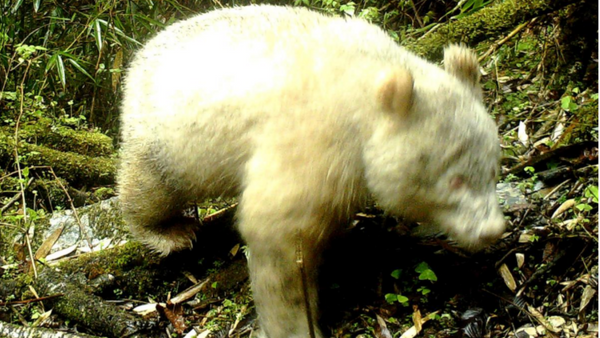Images of the bear roaming through the Wolong National Nature Reserve in the southwestern Chinese province of Sichuan last month were released Saturday. The photos were captured by an infrared camera about 2,000 meters above sea level in Sichuan, according to reserve management authorities, Chinese state media CCTV reported.
— Lawrence Crimmins (@LawrenceCrimmi1) May 28, 2019
The nature reserve plans to set up more infrared cameras to monitor the panda's activities and growth.
"This is the first time a fully albino wild giant panda has been caught on camera, indicating there must be a gene mutation in the giant panda population," Li Sheng, a researcher at Peking University's School of Life Sciences, said, according to CCTV.
"Judging from the photo, the panda is physically strong and taking steady steps, suggesting the gene mutation is not affecting its normal life," Li added, noting that the panda is probably one to two years old.
Albinism is a genetic condition that decreases the amount of melanin pigment formed in the skin, hair and eyes. Melanin is a natural pigment found in most organisms and is responsible for tanning of skin.
According to the Missouri Conservationist Magazine, some researchers estimate that albinism occur in around one in every 10,000 births in mammals.
Animals with albinism usually have pink eyes, nails and, on some animals, scales because their blood vessels show through their skin due to its lack of pigment. As a result, their vision is often affected, making it more challenging for them to avoid predators and find food.
The giant panda is characterized as vulnerable by the International Union for Conservation of Nature (IUCN), which means that it is likely to become endangered if the farming and deforestation that are shrinking its habitat continue.
There are between 500 and 1,000 giant pandas left worldwide, according to the IUCN.



